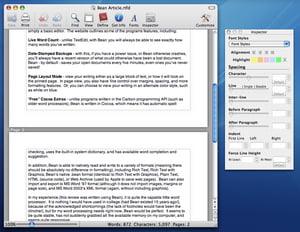Six simple steps guarantee easy puppy raising. These steps make it not only easier to train a puppy, but also to socialize and teach life long skills. More puppies would not end up in shelters, if more owners would set them up for success from the moment they arrive in their home.
Puppies do not come prepackaged or robotically programmed to know what is right. They do not grasp it is not appropriate to jump on people, or not to chew shoes, or not to soil the carpet or dig in the garden. The reality is when a puppy enters a home they must rely on their owner to be their educator, their teacher and their parent.
Here are six steps to make training a puppy easier.
Create a social environment.
Dogs are social creatures. Adding a pup to the household should be as much of a process as adding a baby. The baby will grow up and eventually leave, the puppy will and should be a part of the family for life. Puppies who truly become a family member are included in daily activities and enjoy family life. This puppy will most likely be a well-rounded, confident one.
On the other hand, dogs who live outside or are banned to a garage because they had an accident in the house will be an outsider and not know what is expected in order to properly acclimate to family lifestyle and therefore, will be harder to set up for success.
Creating a social environment means puppy proofing the home, setting up boundaries and rules and supervising, training, and providing exercise and mental stimulation. Anything less will come out in a bored, unsocial dog more likely to have behavioral issues and make up their own rules.
Provide chew toys.
Puppies chew. They are teething and need the stimulation and security chewing provides. This is one reason for supervision and creating proper boundaries and activity times where a puppy can chew a proper toy, filled rubber kong, or bone to their heart’s content. It will save shoes, socks, couches and treasured family items.
A great place to start is with a stuffed kong. Each day puppy should chew for at least an hour. It will be harder to train the puppy to have proper etiquette and respect for human things if they do not have any toys they like. The key word here is to find toys the puppy enjoys, not toys an owner thinks they should have or like. The results will be amazing.
Walk for fun and health.
Dogs go on walks with all their senses blaring. They are on a hunt, not a walk as a human sees it. Tastes, smells, visuals, sounds all need the expertise of a proper teacher. The owner becomes the educator.
Puppies are high energy and should be exercised to the point of being physically tired. If puppy has his tongue hanging out, a satisfied, soft face then they are tired. A tired puppy is a happy puppy and less likely to get into trouble. Daily walks should be thirty minutes of full out aerobic exercise meaning either off leash walks on a trail or in a park, or a jog on lead. The equivalent to this would be a daily one hour walk on lead or more depending on the breed.
Lack of exercise alone can cause deep-seated behavioral problems, anxiety, excessive chewing and more. Exercise means more than stops and starts chasing a ball in the backyard. It will be harder to work with a dog who does not get out of the house or yard, is inactive and does not have proper social interactions with people and other dogs. Make this an important part of any puppie’s day for its lifetime.
Socialization and familiarization
Puppies have fear periods. Fear periods teach an animal to survive. It is the job of the owner educator to make sure the puppy is learning the right things during fear periods. Puppies, according to Dr. Ian Dunbar in his “Before and After You Bring the Puppy Home” book series, need to socialize with 100 people before they are twelve weeks old. Just socializing is not enough because just one scary person can ruin a dog for life. Keep the puppy successful, meeting people who are appropriate and praise and reward so people always equal good things are coming. Break this into easy to do packages, such as three people a day. In thirty days, you’ll have socialized your puppy to 90 appropriate people from older citizens to children, baby carriages, joggers, bikers, women, men, different statues, clothes and any type of person a puppy will encounter in their lifetime.
Puppies need to meet other dogs. Housemates are not enough to socialize a puppy to other dogs. It is important to have successful walks, and meet and greets with relatives, friends and stranger’s dogs. Traveling with your puppy is essential if they are to act appropriately with play groups and in dog parks. Puppies need to see you keeping them safe while developing confidence with big dogs, little dogs, medium dogs and different hair types and statures.A boxer’s stature will look different to a puppy, than a standard poodle. Keeping your puppy safe means appropriate supervision and short duration of successful interactions. It also means not exposing puppy to aggressive dogs or any dog exhibiting inappropriate social skills. It is wise to create puppy play groups, interactions with calm, focused, intelligent dogs who have good social skills and play with adult teacher dogs. Teacher are dogs who have great social skills, are neutral and patient. The puppy will emulate these skills.
Familiarization is important also to objects, sounds, smells and items in a human world. A broom might fall, or a scary rock looms in the garden, or a motorcycle might race by. A well-adjusted, confident puppy has experiences masterminded by an owner who understands teaching a puppy about the environment is a needed part of any successful puppy training program. If a broom falls, simply say “check it out!” point and wait. If the puppy advances, praise and provide a treat. This makes the scary item less scary.
Life Skills training
Often people just jump to training sit, stay, down and while important are not the first steps to living successfully with a puppy. Teaching respect for the household environment through supervision, setting clear rules and boundaries and providing a calming atmosphere are critical first steps. The puppy needs to feel safe, nurtured and develop a trusting relationship and bond with their owner and family to avoid behavioral issues.
Training skills help puppy cope in a human environment, provide entertainment for the human companion and help puppy to grow into a great canine citizen. A sit will be a skill to learn instead of jumping up. It forms the proper way to meet and greet people. A down or go to mat will help the puppy to settle or to be able to be in a relaxing posture while you eat. Stay is necessary for impulse control, along with teaching a solid leave it.
Attention work is critical, because if you are not worth listening to other skills will be difficult to train. Coming when called is a basic skill and reliability depends on how rewarding the owner is and how often this skill is trained. Working all skills in various environments is critical because dogs do not generalize taught skills. Enroll in a positive reward-based obedience class not just for the skills training, but also to provide a positive social learning experience with strange people and dogs. A good puppy class will provide socialization, familiariazation and a positive, safe environment, as well as the opporutnity to interact with other puppies.
Feeding time
This is a great time to train. Dogs need to eat a balanced, nutritionally sound diet. The owner will need to decide whether to feed packaged foods, cook for their dog or feed a raw meaty bones diet. Use feeding time to reinforce behaviors wanted. For instance, teach puppy to sit before serving food and as they acquire more skills a sit plus looking at you in attention equals food is served. Puppy owner is the provider of the food and free feeding will not
provide this very important learning. Puppies need to be fed three to four times per day and should be fed two times throughout their lifetime. Each meal can be a learning experience.
Feeding includes treats for training. Most dogs are very food motivated and in the beginning it provides adequate motivation for a puppy to learn life skills.It will be easier to train a puppy, if the owner enjoys using food rewards. It will be harder to train a puppy without food rewards. A great addition is play training, using balls, tug toys, squeakies to reward proper behavior.
As soon as the new puppy comes to their new home is the ideal time to start training and implementing rules with clear guidelines. Following the six steps to easy puppy training creates a strong foundation of lifelong and enthusaistic learning.






